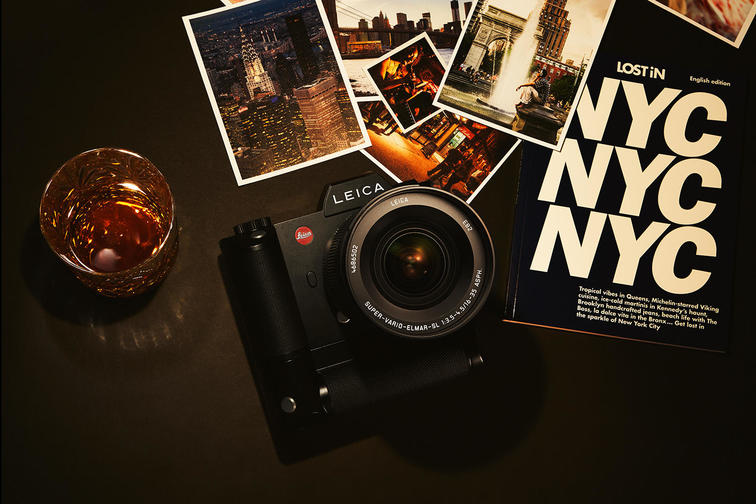Introducing Leica T
Just a few days ago, an unusual novelty appeared in our editorial office. It was provided to us by the Russian representative office of Leica. This is a pre-production instance of a completely new camera, the announcement of which had not yet taken place at the time of preparation of the test. So we are ready to present you an exclusive test of the new Leica T typ 701!
If the name Leica is associated with old shabby cameras, with a film and a line of a song to the verses of K. Simonov “With a Watering Can and a Notebook ...”, then this camera can radically change your idea of this brand. No, workmanship and a certain chic have not gone away - the new camera definitely belongs to the premium segment. But management and appearance have changed radically. Leica T is a mirrorless camera with interchangeable lenses, a huge touch screen and just four controls! Oh yes, and no more shabby leather and retro design, only glass and metal.
What's inside?
The camera is built on the basis of a 16-megapixel CMOS sensor format APS-C without a low-pass filter to achieve maximum image sharpness. Paired with the matrix is a completely new powerful processor. This is not the processor that was used in the Leica X Vario, this is stated by company representatives. Although it’s obvious to a simple tester: there is no trace left of the slowness of the X Vario!
Leica T is the first camera in the system of the same name. It is equipped with a T mount for installing interchangeable lenses. At the moment, the system announced only two lenses: Vario Elmar T 1: 3.5-5.6 / 18-56 ASPH. and a fast 23 mm fix. But this is only the beginning. By the fall, it is planned to release several new lenses. Autofocus lenses, focusing is carried out according to the contrast principle. Vario Elmar T 1: 3.5-5.6 / 18-56 ASPH., With which the Leica T came to our test, is equipped with an optical stabilizer. Already now it is announced that it is possible to use other Leica optics with this camera using the adapter for the Leica M mount. This allows a small working distance.
What is outside?
The design of Leica T is at the same time a classic of smooth lines and rounded shapes, a hi-tech with glass and metal and a corporate minimalism that is characteristic of all Leica cameras. Nothing extra!
The camera body is made of aluminum. Moreover, the body is all-metal, made from a single workpiece using laser cutting. Fans of Apple laptops can easily draw parallels with Macbook cases, made by similar technology.
All finishing of the Leica T aluminum body is done manually. The case is carefully polished. Maybe that’s why the camera fits so perfectly in your hand that you don’t want to release it anymore? On the case there are no non-slip rubber pads, finger slots on the handle, but holding the camera is surprisingly comfortable. It is noteworthy that cases are manufactured and polished at two different plants in Europe. The final assembly of the camera is made in Germany.
By the way, Leica T will be available in both silver and black anodized casing.
Even such a seemingly minor thing as the shoulder strap in the Leica T is worked out to perfection. The narrow rubber strap harmonizes well with the design of the camera. It is very convenient to use: it does not slip, does not get dirty, and has a fair strength. The belt is quick-detachable: using a special key-needle like Apple's proprietary “paper clip” to remove SIM cards from the iPhone, you can detach the belt from the camera along with the mounting eye.
The brilliant German designers and the battery extraction mechanism did not bypass their attention. No battery compartments! The battery is inserted directly into the camera body, merging with it into a single unit. A small lever is provided to remove the battery. If you turn it a little, the battery does not jump out of the case, but protrudes only 5-6 millimeters. To extract it, just press on it a little. Such protection against accidental falls ...
On the top panel, in addition to two buttons and two selectors (these are all Leica T controls), a built-in flash is recessed into the body. To raise it, the camera inclusion selector serves, you just need to pull it all the way to yourself. Needless to say, in the Leica camera even the flash rises in a special way, with a very soft click. And it is cleaned with a pleasant ringing sound of a folding spring.
Also on the top panel is a hot shoe, which is also an accessory port. In addition to the contacts necessary for the external flash to work, here are contacts for the interaction of the camera and accessories: such as an external electronic viewfinder.

